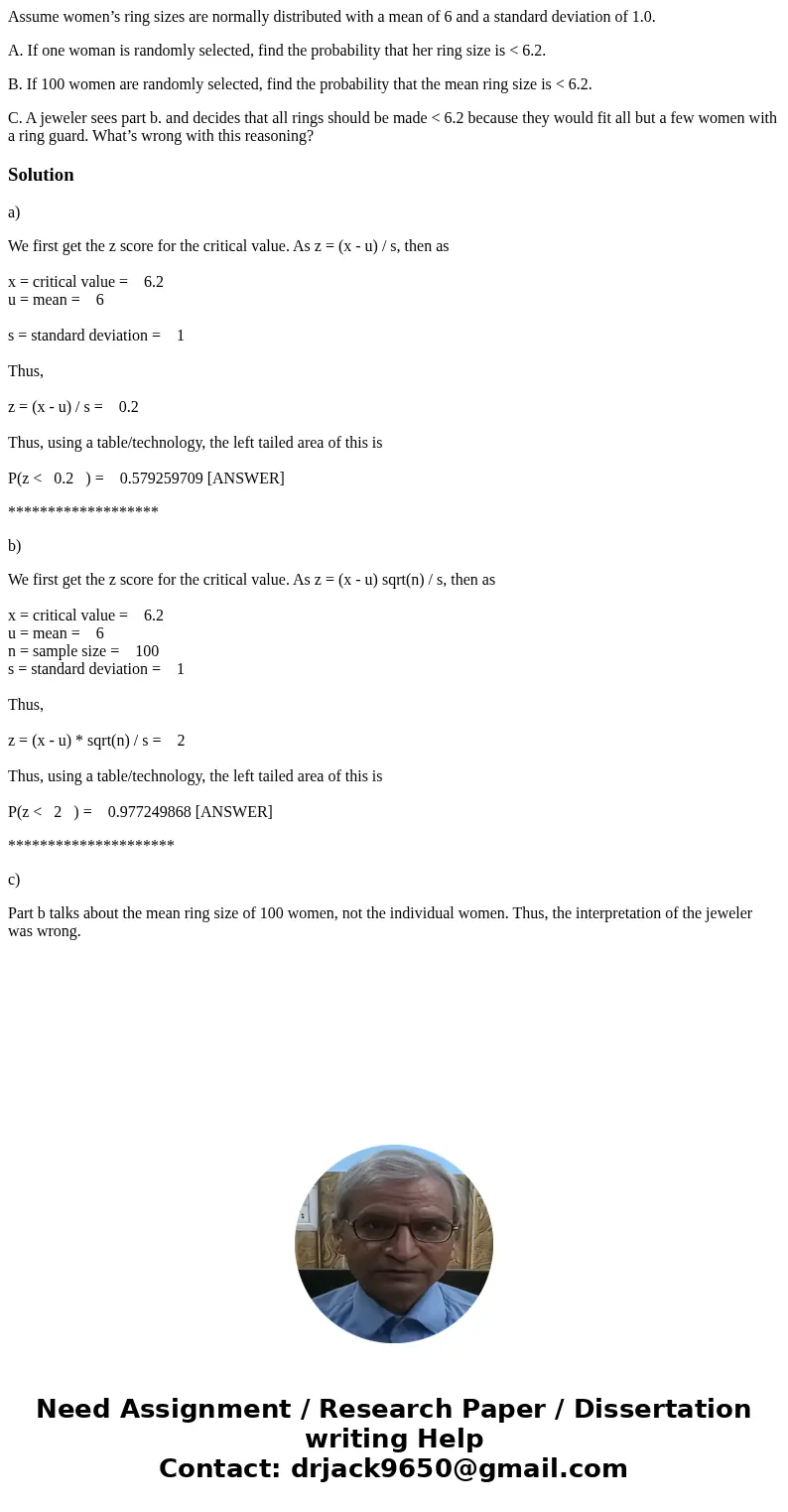Assume womens ring sizes are normally distributed with a mea
Assume women’s ring sizes are normally distributed with a mean of 6 and a standard deviation of 1.0.
A. If one woman is randomly selected, find the probability that her ring size is < 6.2.
B. If 100 women are randomly selected, find the probability that the mean ring size is < 6.2.
C. A jeweler sees part b. and decides that all rings should be made < 6.2 because they would fit all but a few women with a ring guard. What’s wrong with this reasoning?
Solution
a)
We first get the z score for the critical value. As z = (x - u) / s, then as
x = critical value = 6.2
u = mean = 6
s = standard deviation = 1
Thus,
z = (x - u) / s = 0.2
Thus, using a table/technology, the left tailed area of this is
P(z < 0.2 ) = 0.579259709 [ANSWER]
*******************
b)
We first get the z score for the critical value. As z = (x - u) sqrt(n) / s, then as
x = critical value = 6.2
u = mean = 6
n = sample size = 100
s = standard deviation = 1
Thus,
z = (x - u) * sqrt(n) / s = 2
Thus, using a table/technology, the left tailed area of this is
P(z < 2 ) = 0.977249868 [ANSWER]
*********************
c)
Part b talks about the mean ring size of 100 women, not the individual women. Thus, the interpretation of the jeweler was wrong.

 Homework Sourse
Homework Sourse